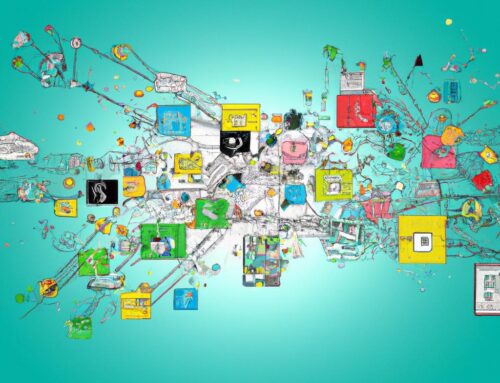In a world where technology evolves at a breakneck pace, the landscape of software development is constantly shifting to keep up with the demands of an increasingly digital world. As we look towards the future of this ever-changing industry, it is important to stay ahead of the curve and anticipate the emerging trends that will shape the way we build and deploy software. From artificial intelligence and machine learning to cloud computing and blockchain technology, the possibilities are endless. Join us as we explore the exciting developments on the horizon and unlock the secrets to staying at the forefront of software development in the years to come.
Table of Contents
- 1. The Rise of Low-Code Development Platforms
- 2. Embracing Artificial Intelligence and Machine Learning
- 3. Shift towards Cloud-Native Development
- 4. Importance of Cybersecurity in Software Development Trends
- Q&A
- In Summary
1. The Rise of Low-Code Development Platforms
Low-code development platforms have been gaining momentum in recent years as businesses look for ways to accelerate software development processes and reduce reliance on traditional coding methods. These platforms offer a visual approach to application development, allowing users to drag and drop components rather than writing code from scratch. This shift towards low-code development is driven by the need for faster time-to-market, increased productivity, and the demand for more user-friendly software solutions.
One of the key advantages of low-code development platforms is their ability to empower citizen developers – individuals with little to no coding experience – to create custom applications. By providing pre-built templates, themes, and integrations, these platforms make it easier for non-technical users to build functional software applications. Additionally, low-code platforms promote collaboration between IT and business teams, enabling faster iteration and deployment of new features. Overall, signifies a shift towards democratizing software development and making it more accessible to a wider range of individuals and organizations.
2. Embracing Artificial Intelligence and Machine Learning
As software development continues to evolve, one of the most exciting trends to watch is the embrace of artificial intelligence (AI) and machine learning (ML). These technologies are revolutionizing the way we approach coding, resulting in more efficient and intelligent solutions. With AI and ML, developers can automate tasks, identify patterns in data, and make predictions based on algorithms.
By integrating AI and ML into software development, companies can streamline processes, improve user experiences, and stay ahead of the competition. From chatbots that can provide instant customer support to predictive analytics that optimize business strategies, the possibilities are endless. It’s essential for developers to adapt to these emerging technologies to create innovative and cutting-edge solutions for the future.
3. Shift towards Cloud-Native Development
Cloud-native development is shaping the future of software development, revolutionizing the way applications are built and deployed. This trend emphasizes designing applications specifically for cloud environments, leveraging the scalability and flexibility of cloud infrastructure. By embracing cloud-native development practices, organizations can streamline their development processes, reduce time-to-market, and enhance overall agility.
Key characteristics of cloud-native development include microservices architecture, containerization, and continuous integration/continuous deployment (CI/CD). With microservices, applications are broken down into smaller, modular components that can be developed, tested, and deployed independently. Containerization, using tools like Docker and Kubernetes, allows developers to package applications and their dependencies into lightweight, portable containers. CI/CD pipelines automate the testing, integration, and deployment processes, enabling rapid and frequent updates.
4. Importance of Cybersecurity in Software Development Trends
As the landscape of software development continues to evolve, one key trend that cannot be overlooked is the importance of cybersecurity. In today’s digital age, where data breaches and cyber attacks are becoming increasingly common, developers must prioritize security measures to protect their software and users. Implementing robust cybersecurity practices not only helps safeguard sensitive information but also builds trust with customers and ensures compliance with regulations.
With the rise of interconnected devices and the Internet of Things (IoT), the need for secure software development practices has never been more crucial. Developers must stay abreast of emerging cybersecurity threats and constantly update their strategies to mitigate risks. From conducting regular security audits to implementing encryption protocols, investing in cybersecurity is essential for the longevity and success of any software development project. By staying proactive and vigilant, developers can stay ahead of cyber threats and build software that is secure, reliable, and resilient in the face of potential attacks.
Q&A
Q: What are some emerging trends in software development that we should be keeping an eye on?
A: Some key emerging trends in software development to watch include the rise of low-code/no-code development platforms, the increasing role of artificial intelligence and machine learning in software development, and the growing importance of cybersecurity in software development processes.
Q: How is the adoption of low-code/no-code development platforms changing the software development landscape?
A: The adoption of low-code/no-code development platforms is democratizing software development and enabling non-technical users to create applications, reducing the time and resources required to bring a product to market.
Q: In what ways is artificial intelligence and machine learning impacting software development?
A: Artificial intelligence and machine learning are revolutionizing software development by automating repetitive tasks, optimizing code quality, and helping developers make data-driven decisions throughout the development process.
Q: Why is cybersecurity becoming increasingly important in software development?
A: With the rise of cyber threats and data breaches, cybersecurity is crucial in software development to protect sensitive information and maintain the trust of users. Software developers must prioritize cybersecurity measures to ensure the security and integrity of their products.
Q: How can software developers stay ahead of the curve and adapt to these emerging trends?
A: To stay ahead of the curve and adapt to emerging trends in software development, developers should continuously improve their skills, explore new technologies, and collaborate with industry professionals to stay informed about the latest developments in the field. By staying proactive and adaptable, software developers can thrive in an ever-evolving technology landscape.
In Summary
As we journey into the future of software development, it’s crucial to stay informed about the emerging trends that are shaping the industry. From AI and machine learning to low-code platforms and decentralized applications, the possibilities are endless. By keeping a pulse on these developments, software developers can adapt and thrive in this ever-evolving landscape. Together, let’s embrace the opportunities that lie ahead and pave the way for a brighter future in the world of technology. Stay curious, stay innovative, and keep coding towards a better tomorrow. The future is ours to create.





